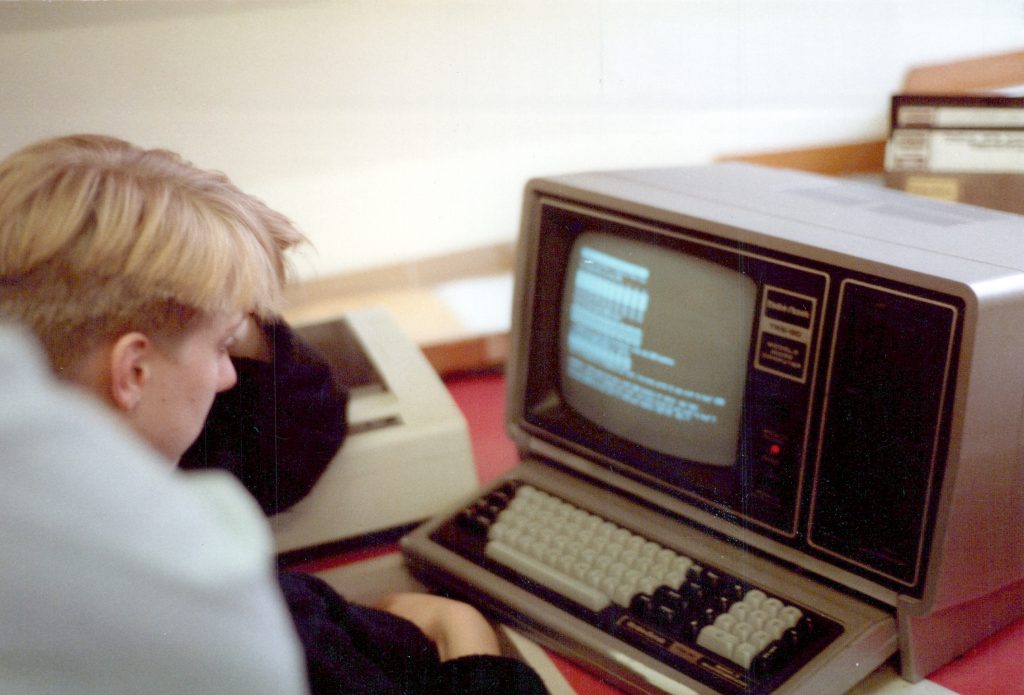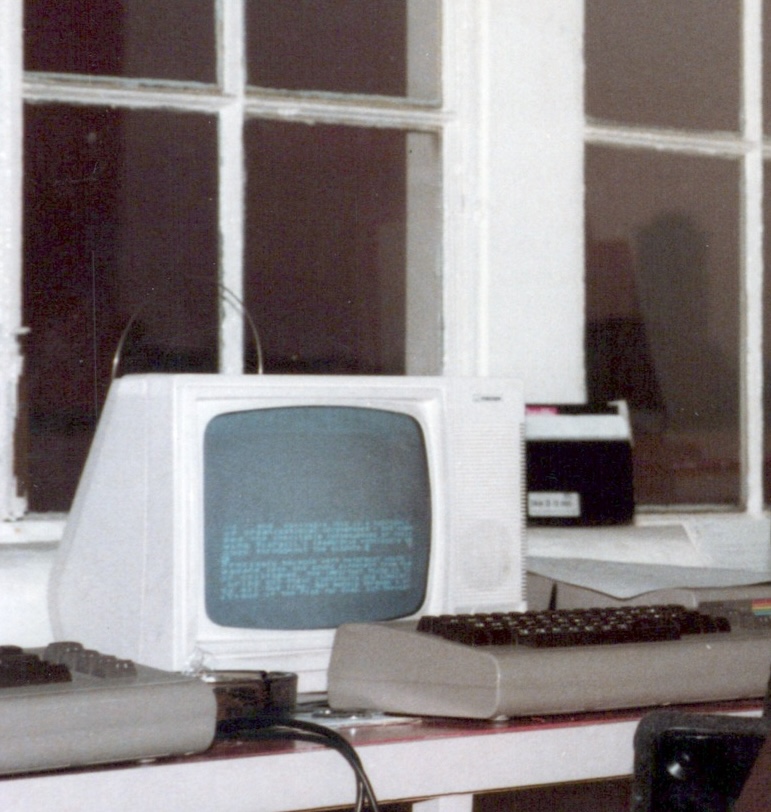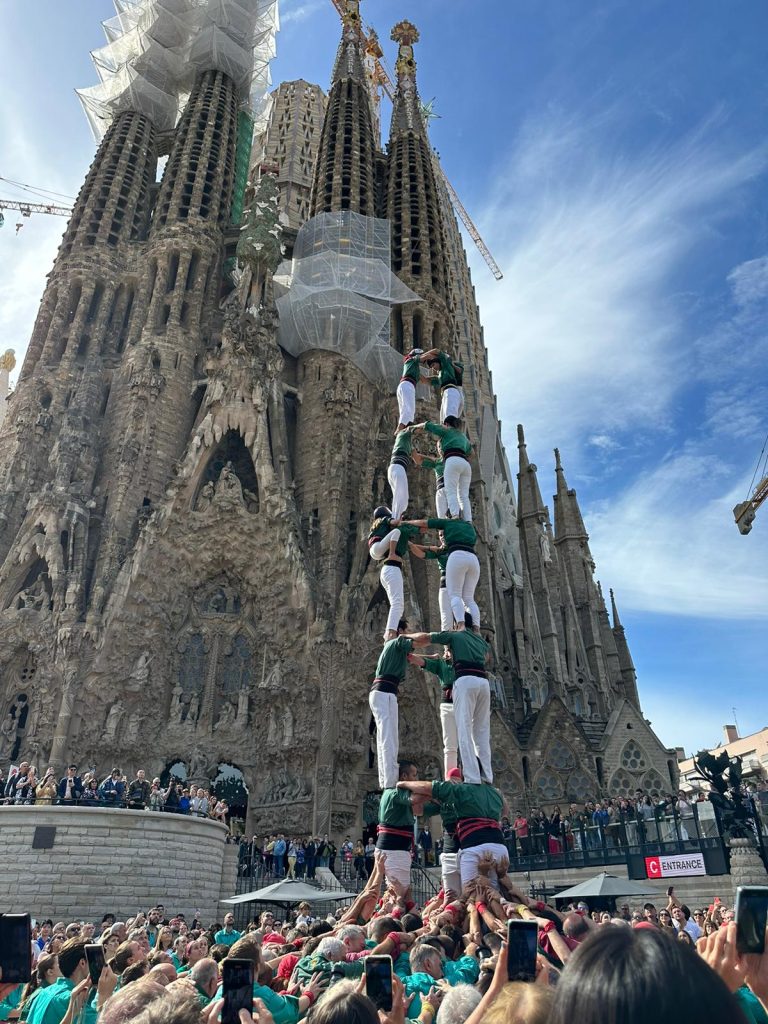Are you a Legacy manager in a Legacy organisation?
“Legacy organisations grew all their people, processes and technology before the rise of the modern internet.”
Professor Mark Thompson, “Digital Strategy and Leadership with Professor Mark Thompson“, YouTube
At one point I was an early adopter.
The first time I used a computer to produce publishable text, signaling the beginning of the end for hot metal printing that was the norm in newspapers at that time, was in about 1983. I remember a Comodore 64 with green, wrap around text. Unfortunately I can´t give you much more technical information, but here are some photos I took at that time. Maybe someone from the museum of obsolete tech can help out here?


We called these machines “new technology” at the time, alongside adding machines that had a paper roll on top. But this was not internet-connected new technology.
My first serious involvement with the internet came in 2000 with a new job, running a Council housing department. I found a computer on my desk (rather than in the typing pool), connected to the internet and a website with my name and photograph. Bemused at first, and used to sending hand-written memos to colleagues to remind them what they. had agreed to do, I soon got the hang of emails and searching. We did not use the website to provide services for citizens. Our housing management system was a simply a database of our properties, supported by a second database which included the names and addresses of our tenants. There was a waiting list which was a list of names, in date order that could be “pointed” to determine priority. Our investment plan was a spreadsheet created alongside the finance team. We had some stock condition data, compiled by our surveyors, which was examined annually to help put the investment plan together. Of course, each property also had a paper file, and so did each tenant household.
“Legacy organisations” (local authorities, housing associations. the NHS, police, etc) “grew their processes, technology and people before the rise of the modern internet”. The internet was invented after we had already designed all our key processes. Today we use investment plans, collect rents, allocate social housing and on-board customers, much as they did, on paper, in the 1930s. And although our records have since been digitised and can be accessed without disturbing the dust on the paper files (which were are collectively paying millions to store), most of these systems are clunky.
But why does Thompson mention people? I came into housing with no technological background whatsoever. I learned a little on the job. Supported by some very capable people, and curious and demanding by nature, I pushed for investment to help us modernise. But like many senior managers I did not know very much about technology and I certainly wasn’t able to design the future at that time.
Of course the next generation (my children, now aged 33 to 42), had a very different experience. In about 2005 I was disturbed by US accents coming from the boys’ bedroom. I rushed in to find them playing video games with kids on different continents. I had no inkling of the possibilities of the internet at that time.
In brief: I was a Legacy manager in a Legacy organisation. We were mainly caretaking a broken model, trying to make it function better. While we were aware that our customers and the next generation of leaders deserved very much better, I didn’t really know how. Now with time to think, and access to some incredible brains and experiences, I am determined to have a go. I am convinced collaboration is the key.

Thanks to my friend Paul Taylor, for telling me about the work of Professor Thompson, especially his idea of a Legacy organisation.

Your article helped me a lot, is there any more related content? Thanks!
Thanks for sharing. I read many of your blog posts, cool, your blog is very good.
Thanks for sharing. I read many of your blog posts, cool, your blog is very good.
Thanks for sharing. I read many of your blog posts, cool, your blog is very good.
Your point of view caught my eye and was very interesting. Thanks. I have a question for you.
I don’t think the title of your article matches the content lol. Just kidding, mainly because I had some doubts after reading the article.
I don’t think the title of your article matches the content lol. Just kidding, mainly because I had some doubts after reading the article.
Your point of view caught my eye and was very interesting. Thanks. I have a question for you.
Thank you for your sharing. I am worried that I lack creative ideas. It is your article that makes me full of hope. Thank you. But, I have a question, can you help me?
Thanks for sharing. I read many of your blog posts, cool, your blog is very good. https://www.binance.info/hu/register-person?ref=FIHEGIZ8
Can you be more specific about the content of your article? After reading it, I still have some doubts. Hope you can help me.
Your article helped me a lot, is there any more related content? Thanks! https://www.binance.com/en-NG/register?ref=JHQQKNKN
Thank you for your sharing. I am worried that I lack creative ideas. It is your article that makes me full of hope. Thank you. But, I have a question, can you help me?
Your point of view caught my eye and was very interesting. Thanks. I have a question for you.
Your article helped me a lot, is there any more related content? Thanks! binance Sign Up
Thanks for sharing. I read many of your blog posts, cool, your blog is very good.
Thank you for your sharing. I am worried that I lack creative ideas. It is your article that makes me full of hope. Thank you. But, I have a question, can you help me?
Thank you for your sharing. I am worried that I lack creative ideas. It is your article that makes me full of hope. Thank you. But, I have a question, can you help me?
Can you be more specific about the content of your article? After reading it, I still have some doubts. Hope you can help me.
Your article helped me a lot, is there any more related content? Thanks!
Your point of view caught my eye and was very interesting. Thanks. I have a question for you.
Your article helped me a lot, is there any more related content? Thanks!
Your article helped me a lot, is there any more related content? Thanks!